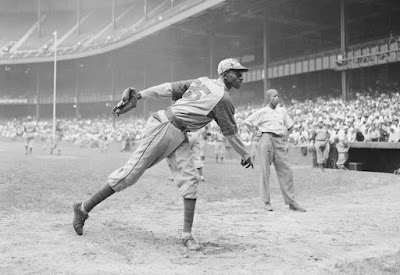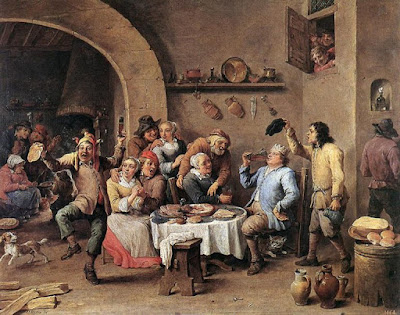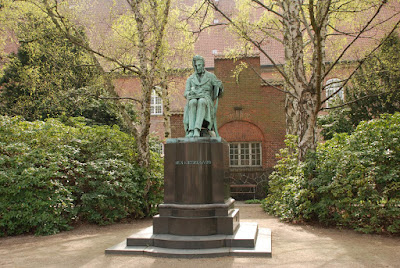“Sometime in mid-1776, just as colonists were declaring their independence from Great Britain, an unnamed Shawnee addressed an assembly of representatives from multiple Indigenous nations who had gathered at the Cherokee capital of Chota. Taking a wampum belt in hand, the Shawnee spoke of a long history of injustice at the hands of the ‘Virginians,’ a term many Native people applied to greedy settlers from Virginia and other colonies. The ‘red people,’ he said, had once been ‘Masters of the whole Country,’ but now they ‘hardly possessed ground enough to stand on.’ Not only did the Virginians want their land, the Shawnee contended, they wanted their lives. It is ‘plain,’ he said, that ‘there was an intention to extirpate them.’ Although the term genocide had not been invented, this is precisely what the Shawnee feared Native people were up against: a project that threatened their very existence. ...”
The Great Fear of 1776
A Brief History of Talking Heads: How the Band Went from Scrappy CBGB’s Punks to New Wave Superstars
2008 September: Talking Heads, 2011 June: Talking Heads: 77, 2011 August: More Songs About Buildings and Food, 2011 October: Fear of Music, 2012 January: Remain in Light, 2012 April: Speaking in Tongues, 2012 June: Live in Rome 1980, 2014 December: "Road To Nowhere" (1985), 2015 May: And She Was (1985), 2011 August: David Byrne: How Architecture Helped Music Evolve, 2012 January: The Knee Plays, 2015 October: My Life in the Bush of Ghosts - Brian Eno / David Byrne (1981), 2016 August: Fear Of Music: Amazing Early Talking Heads Doc From 1979, 2016 June: Performance (1979), 2020 March: Stop Making Sense - Talking Heads (1984)
The 400-Year Rhythm of Great Conjunctions
Amha Eshèté, the dreamer who cut the grooves of Ethiopia’s golden sounds onto wax Image
“Born in Addis Ababa at the end of World War II, Amha Eshèté was never predestined to follow a career in music. Everything changed however in 1969, when the modest record seller dared eventually, to take on the state monopoly of recording and cutting records – and therefore defying ‘Negus’ Haile Selassie I, the Emperor of Ethiopia –, by recording a 45-rpm single of Alèmayèhu Eshèté. Both ran the risk of going to jail for cutting the ‘double-sided’ vinyl in India. ‘It was the first time you could listen to Ethiopian pop music on vinyl. Even those who didn’t have a turntable bought a copy! The first run sold out in a matter of days,’ said Francis Falceto, the sound archaeologist behind the Éthiopiques collection, a series of records that positioned the little-known and mostly fantasized-of country and its African Union headquarters, front-and-center in the music world. ...”
2016 January: New York–Addis–London: The Story of Ethio Jazz 1965–1975, 2017 March: Mulatu Astatke - Ethiopiques, Vol. 4: Ethio Jazz & Musique Instrumentale, 1969-1974, 2018 March: Mulatu Astatke & The Heliocentrics - Inspiration Information (2009), 2018 March: Ernesto Chahoud presents TAITU - Soul-fuelled Stompers from 1960s - 1970s Ethiopia, 2019 September: Music of Ethiopia, 2019 November: Akalé Wubé - Sost (2014)
A push to recognize the statistics of Black players from baseball’s era of apartheid
“Move over, Babe. You too, Ted Williams. More than six decades after taking their last swings, two of baseball’s top sluggers could soon be dropping down the sport’s most hallowed leaderboards to make room for Josh Gibson, Oscar Charleston and Turkey Stearnes. Major League Baseball is considering giving major-league status to six long-defunct Negro Leagues, where 35 Hall of Famers played during the sport’s segregated era. ‘It’s the right thing to do,’ said Scott Simkus, a former Chicago limousine driver who spent much of the last two decades helping build a statistical database of the Negro Leagues by tracking down and chronicling box scores of once-forgotten games. ... ‘Negro Leaguers should be compared against themselves,’ said Larry Lester, a pioneer of Negro League studies and the chairman of the Society for American Baseball Research’s Negro Leagues committee. ...”
MLB elevating the status of Negro Leagues is the problem, not the solution
******NY Times: M.L.B.’s Records Were Never Real. But the Racism Was. Ask Satchel Paige.
Outside The Confines: The Negro Leagues are finally qualified as major league (Audio)
“Although the first organized and sustainable Negro League, the original Negro National League (NNL), founded by Rube Foster in 1920, did not survive the Great Depression, it was the forerunner of several other Negro Leagues. In the 1920s, the Eastern Colored League (ECL) was formed as a counterpart to the NNL. It lasted from 1923 through the early part of 1928, then was succeeded by the American Negro League (ANL) for one year in 1929. The first NNL, largely based in the Midwest, continued its operations into the 1930s, but was replaced in 1932 by another short-lived organized league called the East-West League. Like the ANL, the East-West League survived only one year.In 1933, several events of marked importance occurred: Franklin Delano Roosevelt started his 12-year presidency, Adolf Hitler became chancellor of Germany — and the second NNL began operations. ...”
2015 March: Negro league baseball, 2017 May: Negro National League (1920–31), 2019 October: Can the Rebirth of a Negro League Stadium Revive a Distressed City?
Song For A Winter's Night - Gordon Lightfoot (1967)
2013 September: SS Edmund Fitzgerald
The Magnetic Fields - André Breton and Philippe Soupault (1920) Image
The First Christmas Meal
“These days, British and American Christmases are by and large the same hodgepodge of tradition, with relatively minor variations. This Christmas Eve, for example, when millions of American kids put out cookies and milk for Santa, children in Britain will lay out the more adult combination of mince pies and brandy for the old man many of them know as Father Christmas. For the last hundred years or so, Father Christmas has been indistinguishable from the American character of Santa Claus; two interchangeable names for the same white-bearded pensioner garbed in Coca-Cola red, delivering presents in the dead of night. But the two characters have very different roots. Saint Nicholas, the patron saint of children, was given his role of nocturnal gift-giver in medieval Netherlands. Father Christmas, however, was no holy man, but a personification of Dionysian fun: dancing, eating, late-night drinking—and the subversion of societal norms. ...”
Inhuman communication: Søren Kierkegaard versus the internet
2011 July: Søren Kierkegaard, 2013 April: Repetition (1843), 2013 December: The Quotable Kierkegaard, 2014 October: Fear and Trembling - Søren Kierkegaard (1843), 2014 December: The Dark Knight of Faith - Existential Comics, 2015 July: I still love Kierkegaard, 2015 October: The Concept of Anxiety (1844), 2016 October: Cruel intentions, 2017 July: Søren Kierkegaard Newsletter, 2018 January: Either/Or (1843), 2018 November: The Seducer’s Diary (1843), 2020 July: Søren Kierkegaard’s Struggle with Himself, 2020 November: W. H. Auden - The Living Thoughts of Kierkegaard (1952)
Socialism Informs the Best of Our Politics - Michael Harrington
“... Is socialism relevant to the late 20th and 21st centuries? And if so what does one mean by ‘socialism’? In any case, why identify as a socialist in the United States where the very word invites misunderstanding, at best, and a frantic, ignorant rejection at worst? Finally, given all of these problems why build a socialist organization in this country? First, the socialist critique of power under both capitalism and Communism is not only substantial in and of itself; it also makes a significant contribution to the cause of incremental reform as well as to a radical restructuring of society. ...”
2016 May: The Other America (1962)
Warm Up 2020 | MoMA
John le Carré, Best-Selling Author of Cold War Thrillers, Dies at 89
A food vendor’s Christmas on 14th Street in 1904
2017 January: 34th Street (1903), 2019 September: The fantasy of window shopping in New York City
The Irishman - Martin Scorsese (2019)
Jeremiah's Vanishing New York: Robert Herman
The Champions League’s New Twist: Injury Roulette Image
“The procession was nearly over. Ninety-five of the 96 games that constitute the group phase of the Champions League, six weeks of phony war that largely serve to check boxes, cross Ts and dot Is, were complete. Most of the heavyweights had long since advanced to the knockout rounds. As is so often the case, there had been precious little drama. The whole exercise only served to fuel to the flames of those who would revamp the competition or abandon it altogether. Bayern Munich and Manchester City dropped only two points. Juventus, Barcelona, Chelsea and Sevilla qualified with two games to spare, Liverpool and Borussia Dortmund with one. And yet, with five minutes of injury time still to play in the one game outstanding, it felt a little like everything was on the line. ...”
1960s Dial-a-Poem
"On any given night in 1970, a teen somewhere in rural America could dial a number and hear the radical wisdom of Patti Smith, John Cage, Allen Ginsberg, William S. Bourroughs – the list of poets was long, and painfully hip. One needed only the ten sacred digits of 'Dial-a-Poem,' a revolutionary hotline that connected millions of people to a room of telephones, linked up to an evolving selection of live-recorded poems, speeches, and inspired orations. And frankly, we’d kill to dial up that hotline right now. It all began in the 3rd floor Manhattan loft of the hotline’s founder, artist, and activist, John Giorno, who also happened to be Andy Warhol’s lover at the time. John was on the phone one morning with someone and feeling cranky. ...”
YouTube: "You're a Hook"—The 15 Year Anniversary of Dial-a-Poem (1968-1983) full album, UbuWeb: Giorno Poetry Systems / Dial-A-Poem Poets
2012 June: The Dial-A-Poem Poets: The Nova Convention, 2014 March: The Dial-A-Poem Poets (1972), 2015 January: Dial-A-Poem Poets - Big Ego (1978), 2018 November: I ♥ John Giorno and So Should You, 2019 November: John Giorno – the New York radical who broke art and poetry's boundaries





























